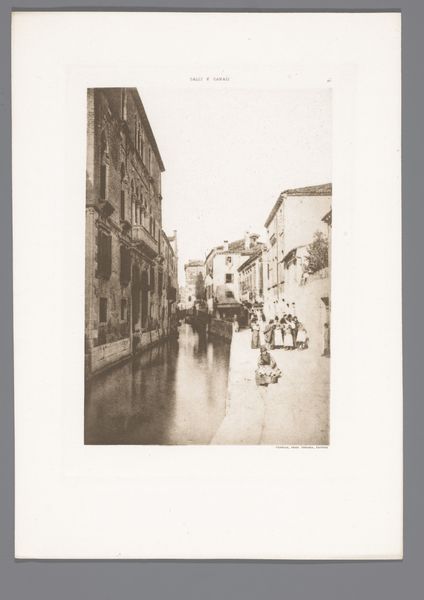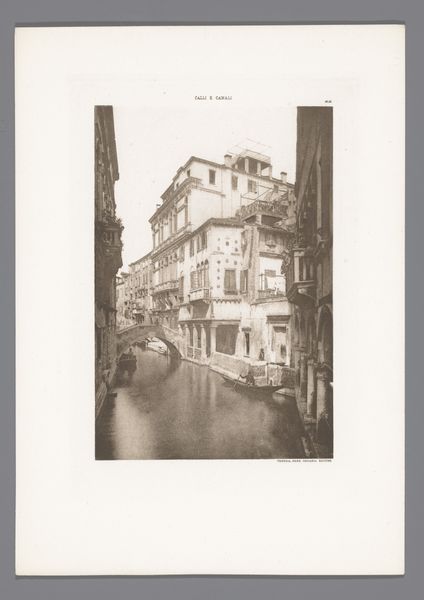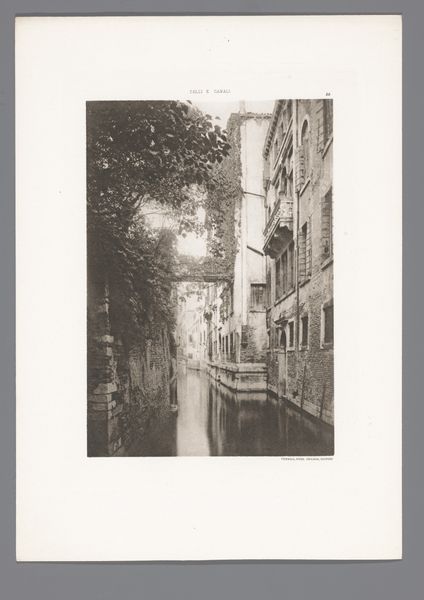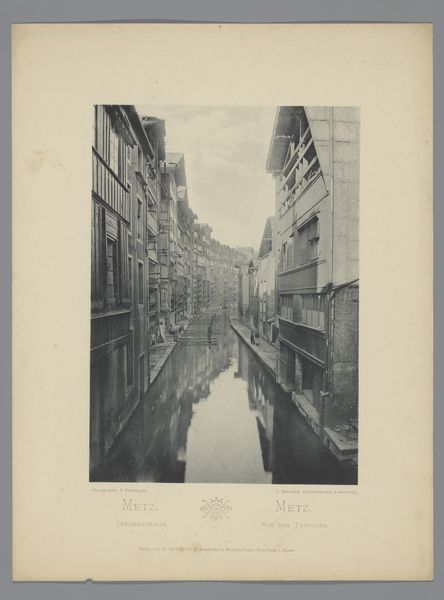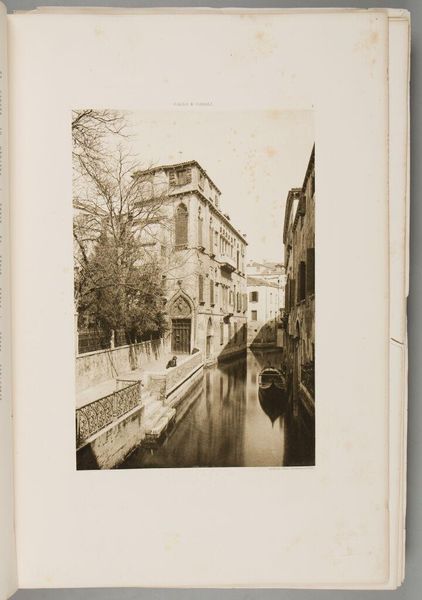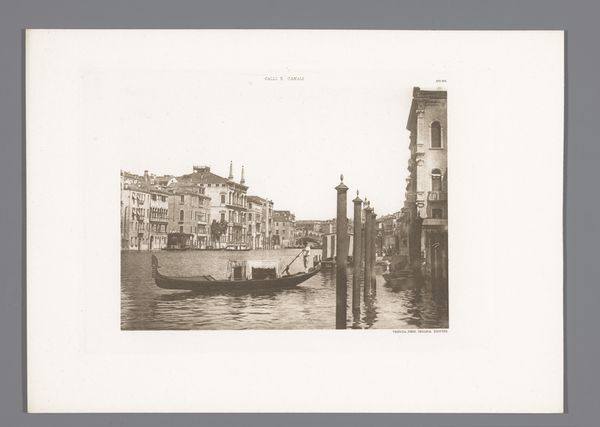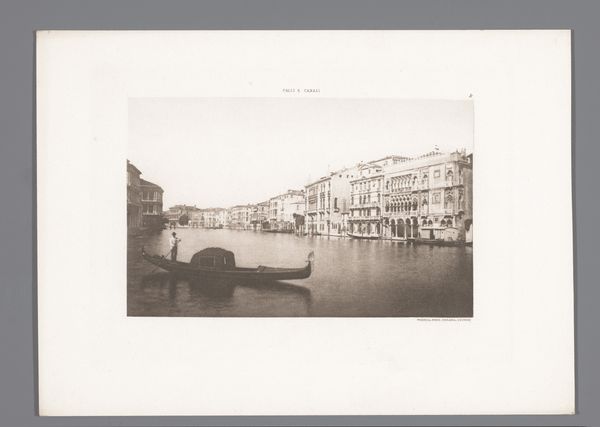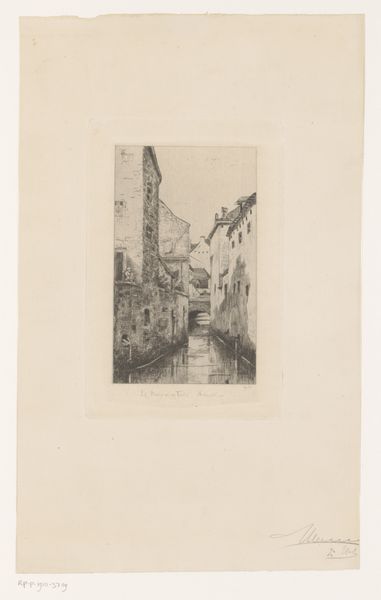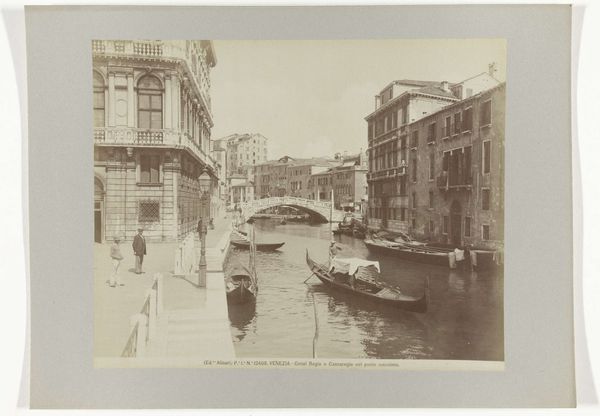
Dimensions: height 185 mm, width 130 mm
Copyright: Rijks Museum: Open Domain
Curator: Before us, we have an anonymous print from before 1898, titled "Gezicht op een kanaal met een brug in Venetië," or "View of a Canal with a Bridge in Venice." It uses the photographic medium. What’s your first take on this image? Editor: A rather melancholic scene, wouldn’t you say? The sepia tones and placid water evoke a sense of quiet reflection, even a bit of nostalgia for a time long past. It's incredibly still. Curator: Indeed. Looking through a critical lens, Venice, with its intricate web of canals, often served as a focal point of Orientalist fantasies and capitalist expansion. Images like this one both participate in and subtly critique such narratives, presenting the city as a place of both beauty and potential exploitation. Consider how tourism impacts such sites. Editor: That’s interesting. My focus shifts to the architecture and the symbolic weight of water, the great leveler. This perpetual fluidity hints at the ever-changing nature of societies built upon shifting grounds, as it were. It brings forth ideas about impermanence. Curator: Right. Notice also how the elevated vantage point frames the canal, turning it almost into a stage. The absence of bustling crowds and laborers allows for us to ponder the structures that govern the social landscape: architecture, infrastructure, power relations. Where is everybody? Who gets erased from the frame? Editor: The stillness allows those architectural icons to be the key subject of inquiry here. The bridge becomes more than just a crossing. The canal itself, like a reflective mirror. Perhaps the image invites us to meditate on our own connections to history and progress, and that can apply to almost anyone. Curator: Certainly. I appreciate how the image resists easy romanticism. There's an invitation to think about class, power, and visibility. It allows the artwork to resist becoming a simple tourist trope. Editor: Well, thinking about how the bridge physically connects parts of Venice, it acts as a cultural symbol linking eras of artistic output together. It helps the viewer contextualize its cultural roots and understand why such works have resonance. It reveals a symbolic layering and the ways places get represented over and over. Curator: Agreed, thinking about how identity informs what endures through representation really deepens this image. Editor: It does.
Comments
No comments
Be the first to comment and join the conversation on the ultimate creative platform.

